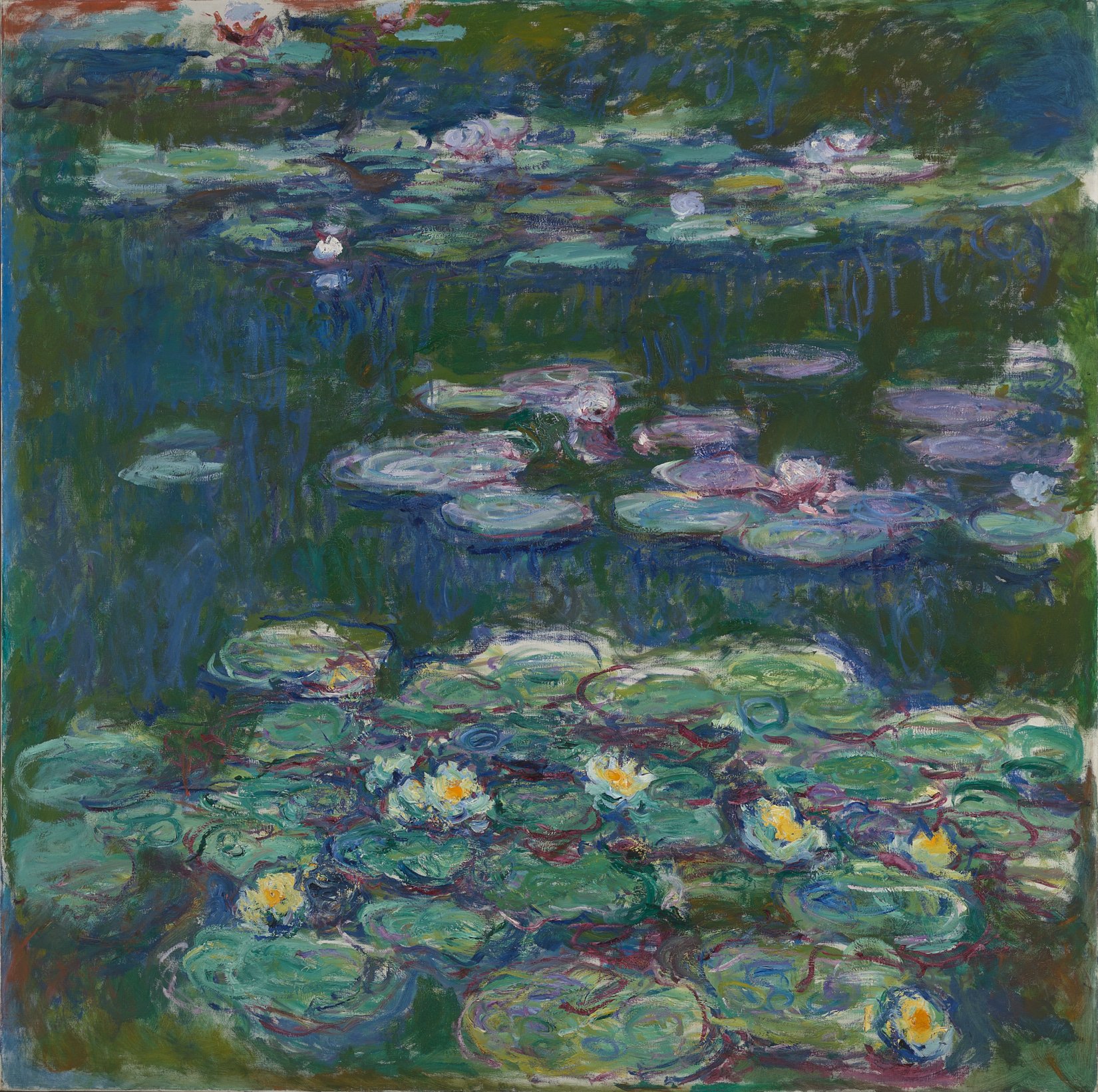Claude Monet
White and Yellow Nympheas, ca. 1915–1917

Claude Monet
White and Yellow Nympheas, um 1915–1917
Kunst Museum Winterthur, Schenkung des Galerievereins, 1952
Foto: SIK-ISEA, Zürich (Martin Stollenwerk)
In the 1920s Impressionism had already become a thing of the past. It was only the old man Claude Monet who still worked in this style. He lived in his house in Giverny, to the west of Paris in the middle of the garden that he’d planted himself.
From 1914 onwards he worked in his garden and produced innovative new paintings that he described as "grande décoration." It was with these „murals”, that he wanted to furnish a pavilion. The large format pictures were supposed to mediate a panorama of the garden landscape. Water, water lilies and plants formed a comprehensive picture on an immense pictorial surface.
These elements are present in the Winterthur work. The lilies are rhythmically grouped on the surface of the water. The eye remains captive within it; there is no horizon, nothing outside of the water. The area of water is the picture. Therefore, Monet focussed everything on the composition of it. Circling brushstrokes evoke lilies and leaves on a dark green area of water. This is enlivened with vertical blue brushstrokes, so that it appears to be gently moving.
During the 1950s Monet’s later pictures were regarded with a certain degree of scepticism. The Kunsthaus Zürich and the Kunstmuseum Winterthur were the first museums to show great interest in them. They purchased their water lily pictures in 1952 - a pioneering deed. Three years later the Museum of Modern Art in New York followed, and since then the Water Lilies have become the epitome of Monet’s painting.


